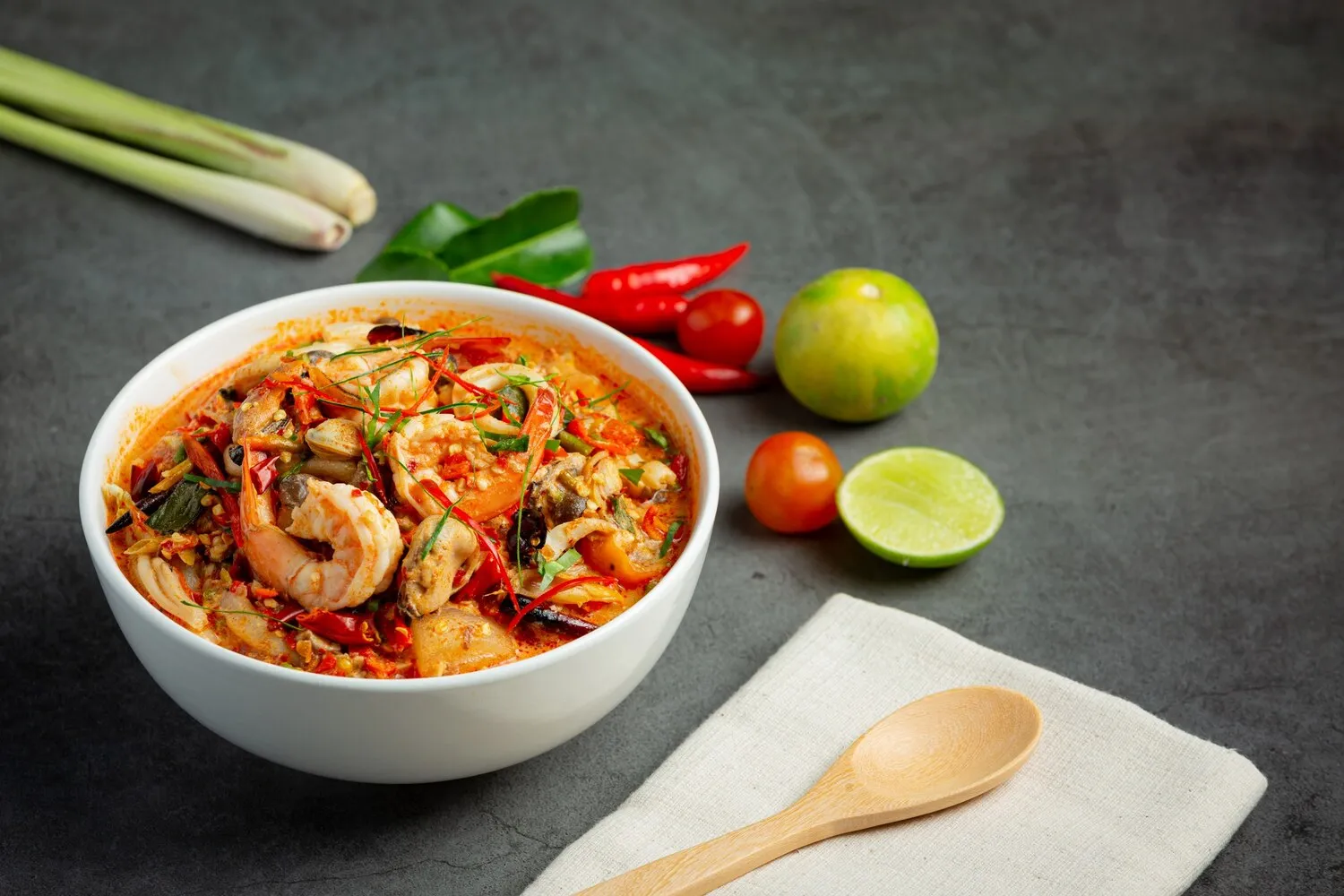
Tom Kha Gai
Traditional Thai coconut soup with chicken, mushrooms, galangal, lemongrass, and lime leaves.
Nutrition Facts
* The % Daily Value (DV) tells you how much a nutrient in a serving of food contributes to a daily diet. 2,000 calories a day is used for general nutrition advice.
Tom Kha Gai's origins are intertwined with the history of Thai cuisine, influenced by neighboring Southeast Asian countries and the availability of local ingredients. Coconut milk, a key component, has long been a staple in Thai cooking. The use of galangal, lemongrass, and kaffir lime leaves reflects the Thai tradition of using medicinal herbs and spices for both flavor and health benefits.
Tom Kha Gai is deeply embedded in Thai culture, often served as a comfort food or a starter in multi-course meals. It reflects the Thai appreciation for balanced flavors and the use of fresh, local ingredients.
Balance of Flavors
Thai cuisine emphasizes the harmonious combination of sweet, sour, salty, spicy, and bitter flavors in a single dish. Tom Kha Gai perfectly exemplifies this principle.
Herbal Medicine
Many of the ingredients in Tom Kha Gai, such as galangal, lemongrass, and kaffir lime leaves, are believed to have medicinal properties and are used in traditional Thai medicine.
Communal Dining
In Thai culture, meals are often shared family style with a central soup like Tom Kha Gai and several side dishes.
Tom Kha Gai is characterized by its creamy, slightly sweet, sour, and savory flavor profile. The aromatic herbs contribute a refreshing complexity, while the coconut milk provides richness and balance.
The creamy base comes from coconut milk, which tempers the sourness of lime juice and the fish sauce (or soy sauce for a vegetarian version). Galangal provides a ginger-like, slightly citrusy aroma and flavor, distinct from ginger itself. Lemongrass adds a bright, lemony fragrance and taste, while kaffir lime leaves contribute a distinct citrusy, floral aroma. Chili peppers provide a touch of heat, and mushrooms add an earthy umami element. Chicken contributes savory depth.
Fresh Ingredients are Key
Use fresh galangal, lemongrass, and kaffir lime leaves for the best flavor. Dried versions can be used in a pinch, but the aroma and taste will be less vibrant.
Balancing the Flavors
Adjust the amount of lime juice, fish sauce (or soy sauce), and chili peppers to suit your taste. Start with small amounts and taste frequently.
Preventing Curdling
Add the lime juice towards the end of cooking to prevent the coconut milk from curdling. Do not boil vigorously after adding the lime juice.
Galangal Substitute
If galangal is unavailable, use ginger as a substitute, though the flavor will be slightly different. Add a touch of lemon zest for some citrus notes.
Explore additional Soup dishes and restaurants
Explore SoupDiscover top dining spots and culinary experiences in Bregenz.
Explore BregenzLearn more about the food culture, restaurant scene, and culinary heritage of Austria.
Explore Austria